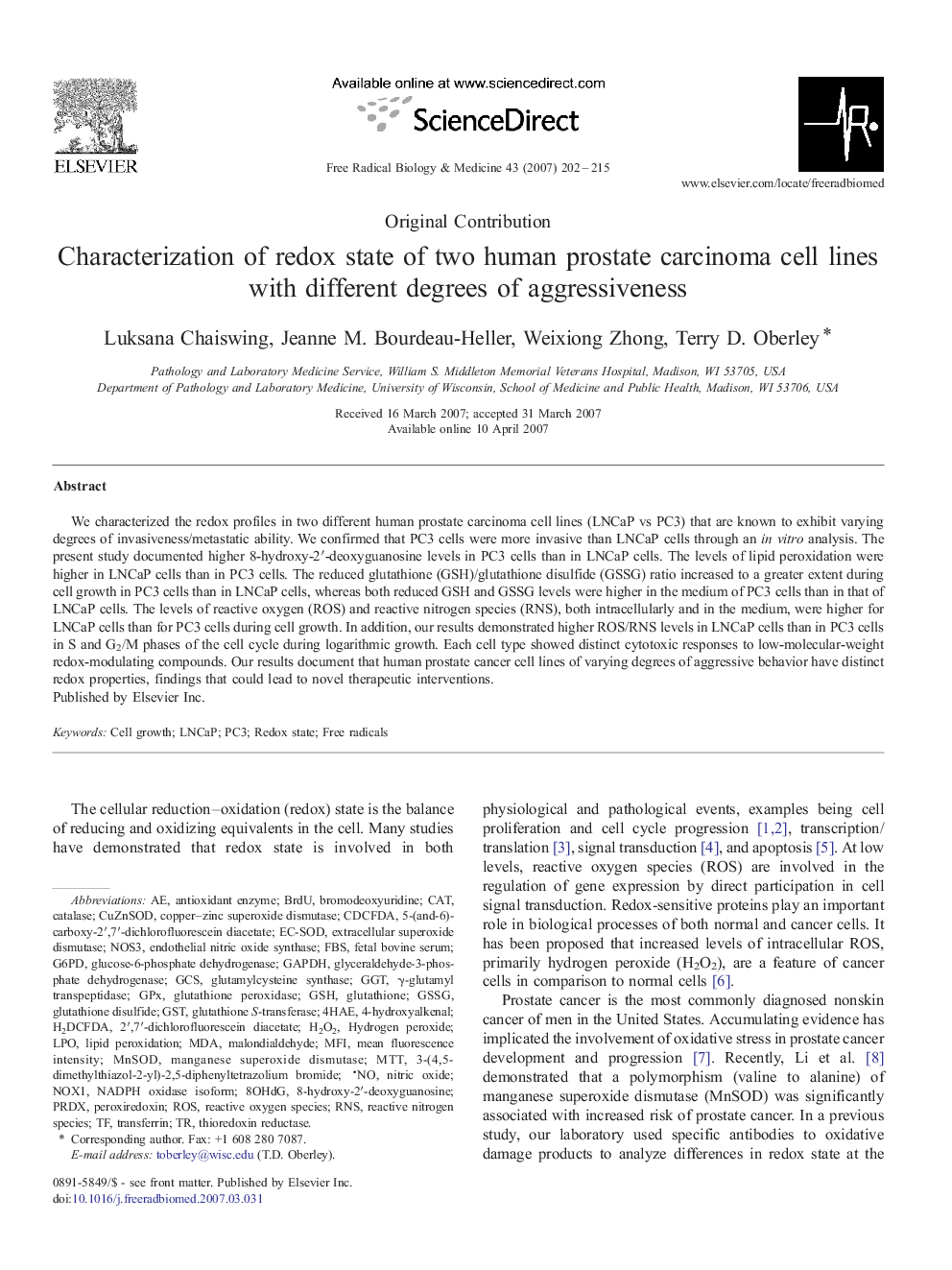| Article ID | Journal | Published Year | Pages | File Type |
|---|---|---|---|---|
| 1911202 | Free Radical Biology and Medicine | 2007 | 14 Pages |
We characterized the redox profiles in two different human prostate carcinoma cell lines (LNCaP vs PC3) that are known to exhibit varying degrees of invasiveness/metastatic ability. We confirmed that PC3 cells were more invasive than LNCaP cells through an in vitro analysis. The present study documented higher 8-hydroxy-2′-deoxyguanosine levels in PC3 cells than in LNCaP cells. The levels of lipid peroxidation were higher in LNCaP cells than in PC3 cells. The reduced glutathione (GSH)/glutathione disulfide (GSSG) ratio increased to a greater extent during cell growth in PC3 cells than in LNCaP cells, whereas both reduced GSH and GSSG levels were higher in the medium of PC3 cells than in that of LNCaP cells. The levels of reactive oxygen (ROS) and reactive nitrogen species (RNS), both intracellularly and in the medium, were higher for LNCaP cells than for PC3 cells during cell growth. In addition, our results demonstrated higher ROS/RNS levels in LNCaP cells than in PC3 cells in S and G2/M phases of the cell cycle during logarithmic growth. Each cell type showed distinct cytotoxic responses to low-molecular-weight redox-modulating compounds. Our results document that human prostate cancer cell lines of varying degrees of aggressive behavior have distinct redox properties, findings that could lead to novel therapeutic interventions.
